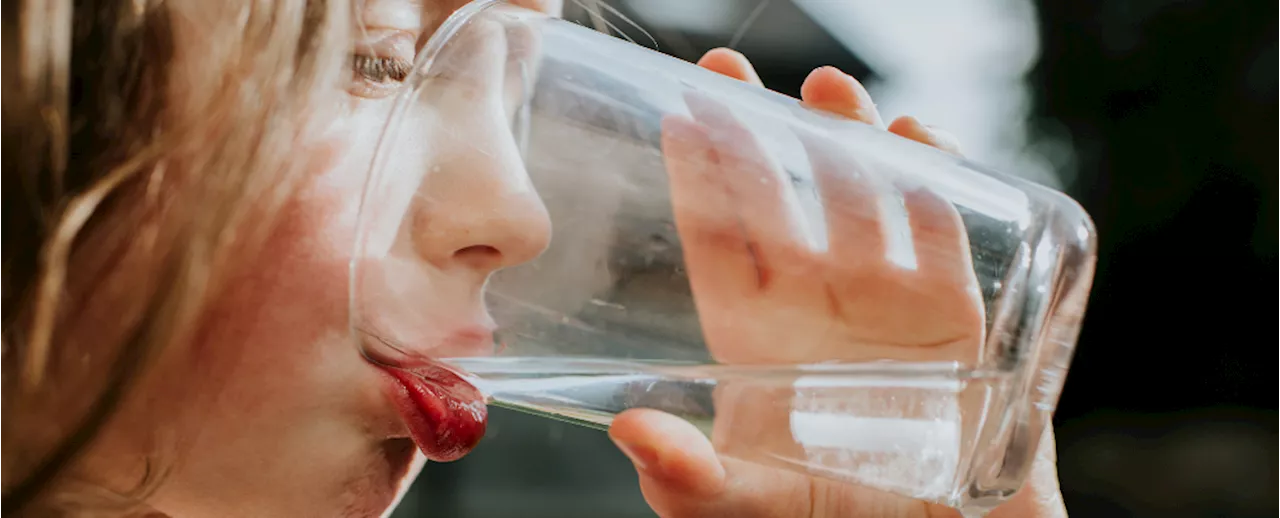A new study reveals that nearly a third of Americans are exposed to unregulated contaminants in their drinking water, with Hispanic and Black communities facing a higher risk. Researchers emphasize the urgent need to protect source waters and reduce discharges of pollutants to ensure safe drinking water for all.
Nearly a third of Americans have been exposed to unregulated contaminants in their drinking water that might affect their health. What's more, Hispanic and Black people are more likely to have unsafe levels of contaminants in their drinking water , and to live near pollution sources like industrial facilities, researchers said in a new study published January 15 in the journal Environmental Science & Technology.
\Our findings show that the percentage of Hispanic and Black residents in a community is a consistent predictor of poorer water quality,” said lead researcher Aaron Maruzzo, a scientist at Silent Spring Institute in Boston, in a news release from the group. Public water facilities are currently required to test for nearly 100 contaminants in drinking water, researchers said. “Yet we know there are thousands of other harmful chemicals that are not regulated that make their way into groundwater and surface waters, and some of these chemicals can ultimately end up in drinking water supplies,” senior researcher Laurel Schaider, a senior scientist at Silent Spring Institute, said in a news release. \For this study, researchers looked at data the U.S. Environmental Protection Agency collected between 2013-2015 under a program tracking unregulated contaminants in drinking water. The research team analyzed data from more than 4,800 public water systems and found that 27% -- serving 97 million people -- had detectable levels of at least one of these chemicals:These chemicals appear more frequently in Hispanic and Black neighborhoods, which are more likely to be situated close to sites that discharge the pollutants, researchers said. Discharge sites include wastewater treatment plants, airports, industrial sites, and military training facilities. These findings build on previous research by the Silent Spring Institute which found that Hispanic residents were more likely to be exposed to higher levels of nitrate in drinking water, researchers stated. Nitrate exposure can cause a fatal condition called “blue baby syndrome,” in which blood is less able to carry oxygen around the body, researchers said. Nitrate exposure also might increase the risk of colon and \Ultimately, we need to do a better job at protecting source waters and reducing discharges of pollutants into water bodies that feed into our drinking water supplies,” Schaider concluded.
Drinking Water Contaminants Environmental Health Water Quality Racial Disparities
United States Latest News, United States Headlines
Similar News:You can also read news stories similar to this one that we have collected from other news sources.
 Unregulated Contaminants Found in US Drinking Water Disproportionately Affect Non-White CommunitiesA new study reveals that nearly one-third of public water systems in the U.S. contain detectable levels of unregulated contaminants, with Black and Hispanic communities being more likely to be exposed. This raises concerns about environmental justice and the disproportionate impact of poor water quality on marginalized groups.
Unregulated Contaminants Found in US Drinking Water Disproportionately Affect Non-White CommunitiesA new study reveals that nearly one-third of public water systems in the U.S. contain detectable levels of unregulated contaminants, with Black and Hispanic communities being more likely to be exposed. This raises concerns about environmental justice and the disproportionate impact of poor water quality on marginalized groups.
Read more »
 Fluoride in Drinking Water Linked to Lower IQ in Children: New StudyA new study published in JAMA Pediatrics suggests a possible connection between fluoride in drinking water and lower IQ scores in children.
Fluoride in Drinking Water Linked to Lower IQ in Children: New StudyA new study published in JAMA Pediatrics suggests a possible connection between fluoride in drinking water and lower IQ scores in children.
Read more »
 Fluoride in Drinking Water: New Study Raises Concerns About IQA recent study published by the National Institutes of Health (NIH) has reignited the debate surrounding fluoride in drinking water. The study suggests a possible link between high levels of fluoride exposure and lower IQ in children. While the findings are inconclusive at levels below 1.5 mg/L, the report's timing, released just weeks before President-elect Donald Trump takes office, has given it renewed prominence. The debate centers on the potential neurodevelopmental harms of fluoride, particularly for pregnant women and young children exposed to high levels.
Fluoride in Drinking Water: New Study Raises Concerns About IQA recent study published by the National Institutes of Health (NIH) has reignited the debate surrounding fluoride in drinking water. The study suggests a possible link between high levels of fluoride exposure and lower IQ in children. While the findings are inconclusive at levels below 1.5 mg/L, the report's timing, released just weeks before President-elect Donald Trump takes office, has given it renewed prominence. The debate centers on the potential neurodevelopmental harms of fluoride, particularly for pregnant women and young children exposed to high levels.
Read more »
 Drinking Plenty of Water: More Benefits Than You ThinkA new study reviews 18 previous studies on the health benefits of drinking plenty of water, revealing a range of advantages beyond simple refreshment. While the link between water consumption and specific health outcomes isn't always clear, the review suggests potential benefits in various areas. The study emphasizes the importance of staying hydrated, as dehydration is linked to shorter lifespans and increased risks of chronic illnesses. It also highlights the recommended daily water intake, varying based on individual needs and environment.
Drinking Plenty of Water: More Benefits Than You ThinkA new study reviews 18 previous studies on the health benefits of drinking plenty of water, revealing a range of advantages beyond simple refreshment. While the link between water consumption and specific health outcomes isn't always clear, the review suggests potential benefits in various areas. The study emphasizes the importance of staying hydrated, as dehydration is linked to shorter lifespans and increased risks of chronic illnesses. It also highlights the recommended daily water intake, varying based on individual needs and environment.
Read more »
 Race is on to save the Everglades and protect a key source of drinking waterIn Florida, a race is on to save the Everglades and protect a key source of drinking water. The Everglades are facing numerous threats, including pollution, rising sea levels, and development.
Race is on to save the Everglades and protect a key source of drinking waterIn Florida, a race is on to save the Everglades and protect a key source of drinking water. The Everglades are facing numerous threats, including pollution, rising sea levels, and development.
Read more »
 Mount Vernon residents worried about drinking water after letters warn them of violation, potential lead exposureMount Vernon’s Water Operator says the water is safe, but that ADEM required the city to send out warning letters after they failed to meet a report deadline.
Mount Vernon residents worried about drinking water after letters warn them of violation, potential lead exposureMount Vernon’s Water Operator says the water is safe, but that ADEM required the city to send out warning letters after they failed to meet a report deadline.
Read more »
